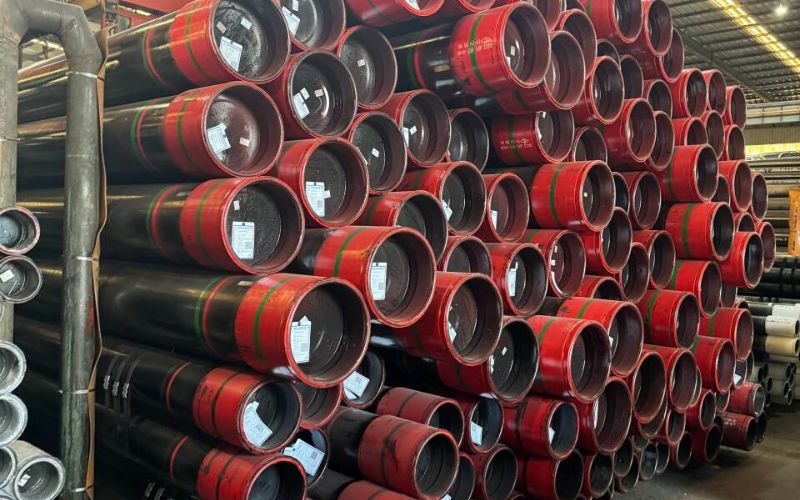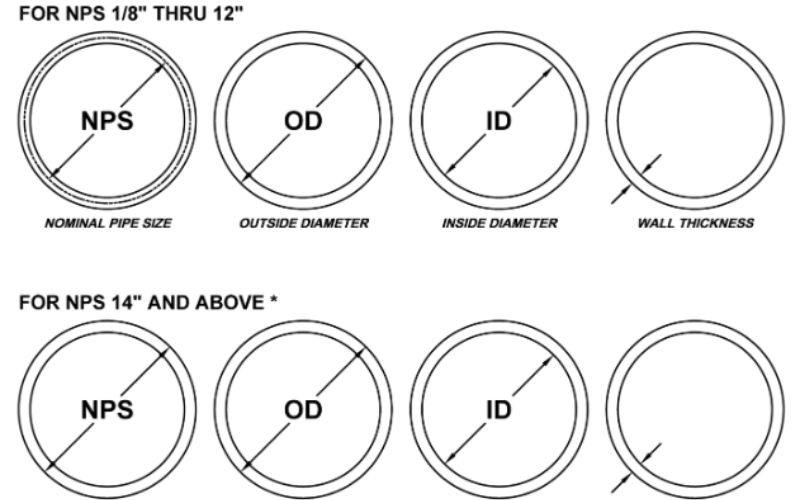Steel pipes and tubing serve as essential hardware for multiple industries, including civil construction, infrastructure, energy, and manufacturing. Out all varieties, ERW steel pipes and tubing are considered the most versatile, durable, and cost-efficient. But what are ERW pipes really, and why are they so much in demand? In this article, we explore the ERW steel pipes and tubing world to discuss how they are made, their characteristics, and the benefits they offer to modern industries. From a professional engineer to procurement to simply an enthusiast, this article will give you a dynamic full-circle understanding of ERW piping and its critical importance in various sectors.
Introduction to ERW
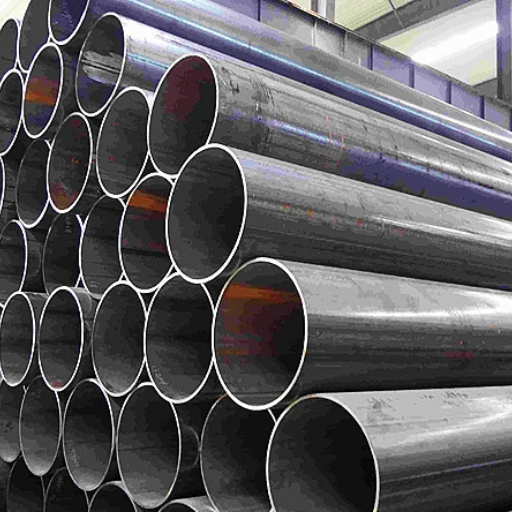
ERW is an Electric Resistance Welding process used in making steel pipes and tubing. In this process, metal sheets are rolled into a tubular shape, pressed, and subjected to an electric current for joining their edges. The pipes look seamless but are indeed sturdy and flexible. ERW pipes find widespread use in construction, automotive, and power industries because of the consistent quality, low-cost, and specification adaptability.
What is ERW?
Electric Resistance Welding (ERW) is a very efficient and economical pipe-making method that offers a fine balance between strength, accuracy, and reliability. One of its main advantages is being able to generate pipes with a uniform structure that has a very smooth surface, enabling their use in critical applications. It has been found that these pipes resist high pressures and deformation, therefore proving to be the best choice for aggressive environments.
In the international scenario, ERW pipes are used for several purposes in different industries. In the energy sector, these pipes are employed for the transportation of oil and natural gas, as they are durable and have uniform wall thickness. Conversely, in construction, they are used as structural supports for buildings and infrastructure, giving strength and durability. Automotive manufacturers also appreciate the lightweight yet sturdy nature of ERW pipes for enhancing vehicle performance and fuel efficiency.
Creation and development of new materials and welding methods have definitely been helpful to putting more potential in ERW pipes. High-frequency welding technique gives tighter tolerance and best weld quality, thus minimizing the risk of a weld failure in heavy-duty applications. Market reports from all over the world also show that the demand for ERW pipes is climbing, with the industry expected to cross a valuation of $84 billion plus by 2030, thanks to a boom in energy and urban development sectors.
Importance of Electric Resistance Welding in Steel Production
In modern steel production, ERW plays the role of producing pipes and tubes through a very efficient and reliable process. This process is generally preferred since it gives the pipes superior strength, precision, and cost efficiency compared to other types of welding. The ERW-welding process is especially useful when large quantities of products are involved, for it wastes the least amount of materials while guaranteeing quality results.
Advancements in technology have contributed to the further development of the ERW method. As an example, modern automated systems weld at a speed of up to 20 meters per minute, so that production rates could be increased without compromising the integrity of the weld. It is said by market analysts that 65 percent of the worldwide market for welded steel pipes belongs to ERW pipes, showing their standing in various industries.
The importance of ERW increases with its versatility. Pipes from such methods find use in oil and gas industries for transport pipelines; in automotive for structural frameworks; and in construction for scaffolding and infrastructure. It may be warranted that these pipes be highly corrosion-resistant, have uniform wall thickness, and be able to meet stringent safety standards for critical applications.
Besides decreasing the time required for production, ERW also promises some sustainability, for it is the least energy-consuming process amongst other welding types that give fewer emissions. All these make the ERW gradually indispensable in making way for the growth of the industry so that it can meet the demands of a changing worldwide market.
Overview of ERW Pipe Applications
Electric Resistance Welded (ERW) pipes are instrumental across a diverse range of industries due to their exceptional versatility, durability, and cost-effectiveness. Their applications span from infrastructure and construction to energy, automotive, and agriculture sectors, owing to their ability to meet demanding technical and safety requirements.
- Oil and Gas Industry: ERW pipes are widely used to transport oil, gas, and water in large volumes. With their high strength and precision, they are commonly employed in onshore and offshore pipeline systems. According to recent industry data, around 70% of oil and gas pipeline projects in the modern era utilize ERW pipes due to their cost advantages and ease of installation.
- Construction Sector: Within the field of construction, ERW pipes provide structural support in buildings, bridges, and industrial facilities. Their uniform strength and lightweight nature make them a preferred choice for architects and engineers. The demand for ERW pipes in the global construction sector is projected to grow steadily, fueled by urbanization and infrastructure development projects.
- Automotive Manufacturing: ERW pipes play a critical role in automobiles, specifically in components such as chassis and exhaust systems. The automotive industry values ERW pipes for their precision and ability to withstand high pressures and temperatures. Market trends highlight a consistent increase in the usage of these pipes as the demand for energy-efficient vehicles rises.
- Water and Sewage Systems: Municipalities rely on ERW pipes for water supply and wastewater management systems. The pipes’ resistance to corrosion and pressure ensures reliable operation over long periods, reducing maintenance costs and downtime. Annual growth rates in the water and sewage industry indicate expanding requirements for ERW pipelines as infrastructure modernizes globally.
- Agriculture and Irrigation: Farmers benefit from ERW pipes in irrigation systems due to their affordability and robust design. These pipes facilitate efficient water distribution in large-scale applications, helping to optimize agricultural productivity while conserving resources.
The annual production of ERW pipes is increasing globally, driven by their innate benefits and adaptability to different industries. Companies continue investing in ERW technology to enhance product quality while reducing carbon footprints, aligning with environmental goals and shaping the future of piping solutions.
Key Differences Between ERW and Other Steel Tubing
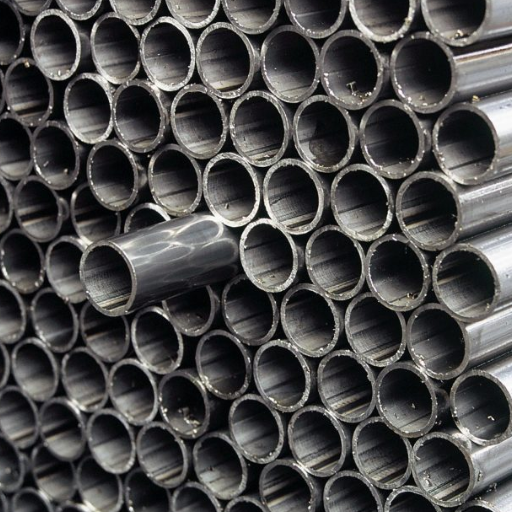
- Manufacturing Process: ERW pipes are welded along the longitudinal seam without filler material, while different types of steel tubes like seamless pipes are extruded, forming one continuous tube with no weld joints.
- Cost Efficiency: Since ERW pipes have a simple manufacturing process with low wastage of a material, they are usually cheaper to make compared to seamless pipes.
- Strength and Precision: Whereas seamless pipes are employed in situations requiring high pressure and structural strength, ERW pipes are employed in various precision-demanding applications because of their consistent wall thickness and dimensional accuracy.
- Application Suitability: ERW pipes find application in a host of low-pressure situations such as water transportation and scaffolding, whereas seamless pipes find application in high-pressure or high-criticality situations such as oil and gas pipelines.
- Availability and Customization: ERW pipes are easily available and, based on industrial need, can be manufactured into any size or length.
Difference Between ERW and Seamless Pipes
The main difference between ERW and seamless pipes is that ERW pipes have a welded seam, while seamless pipes are manufactured without any welds.
|
Aspect |
ERW Pipe |
Seamless Pipe |
|---|---|---|
|
Seam |
Welded |
None |
|
Strength |
Lower |
Higher |
|
Process |
Welding |
Extrusion |
|
Cost |
Lower |
Higher |
|
Pressure |
Moderate |
High |
Hot Rolled vs. Cold Rolled ERW Tubing
The main difference between hot-rolled and cold-rolled ERW tubing is that hot-rolled tubing is formed at high temperatures, making it more malleable, while cold-rolled tubing is processed at room temperature, resulting in higher strength.
|
Aspect |
Hot-Rolled |
Cold-Rolled |
|---|---|---|
|
Process |
High Temp |
Room Temp |
|
Strength |
Lower |
Higher |
|
Malleable |
Higher |
Lower |
|
Finish |
Rough |
Smooth |
|
Cost |
Lower |
Higher |
Understanding the Manufacturing Process of ERW
Standardizing maintenance processes and sharing best practices allow ERW pipe plants to gain unmatchable efficiency. The process involves untreated metal in the form of coils or strips, which are uncoiled, straightened, and cut to required dimensions. It is essential for the raw material thickness and width to be uniform throughout its length, as this will have a bearing on the constancy of the end product.
The steel strip is set through a series of rollers, which bend it into a cylindrical form. Electric resistance welding is next, wherein the cylindrical edges are welded together. Localized heat is generated by the electrical resistance to weld the edges while mechanical pressure is simultaneously applied; the longitudinal weld thus obtained is strong and seamless and requires no filler material. The welding temperature varies from about 900°F to 2250°F, depending on the grade and thickness of the material.
The cooling of the pipe follows immediately after welding, and the pipe is then subjected to sizing procedures for attaining very accurate dimensional accuracy. Sizing machines are fitted with an automatic control system, ensuring that the pipe diameter, roundness, and wall thickness meet very stringent specifications. Once the pipe is manufactured, it undergoes a series of quality assurance tests such as ultrasonic testing, hydrostatic pressure tests, visual inspection, etc., to verify its structural integrity and compliance with the industry standards.
The modern ERW plants focus more on efficient and sustainable processing. High-speed production lines can produce thousands of feet of pipe every hour while using less energy and creating less waste. Technological advancements have made it possible to customize pipe sizes, wall thicknesses, and material grades to suit the specifications of various applications, making it a highly adaptable and reliable product for construction and even energy transportation.
Types of ERW Tubing
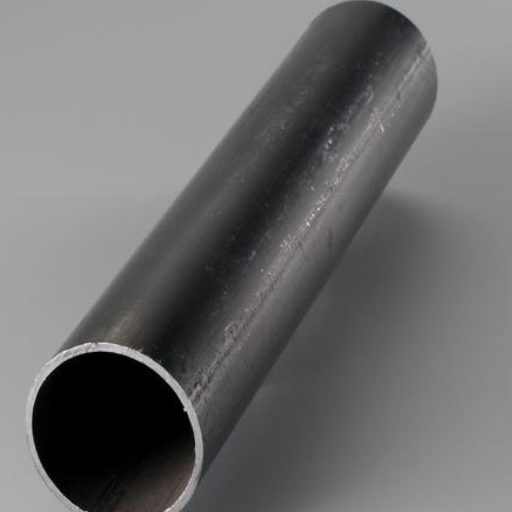
ERW tubing types include longitudinal welded, spiral welded, round, square, rectangular, CREW (Cold Rolled ERW), and HREW (Hot Rolled ERW).
|
Type |
Shape |
Process |
Specs |
Use |
|---|---|---|---|---|
|
Longitudinal |
Round |
Welded |
A513 |
Structural |
|
Spiral |
Square |
Welded |
A500 HSS |
Piping |
|
CREW |
Rectangular |
Cold Rolled |
– |
Machinery |
|
HREW |
– |
Hot Rolled |
– |
Supports |
Round ERW Tubing Specifications
Round ERW (Electric Resistance Welded) tubing is engineered to provide exceptional strength, durability, and precision for a wide range of applications. Typically manufactured from high-quality steel, round ERW tubing meets industry standards such as ASTM A513 and ASTM A500, ensuring reliable performance across various sectors.
Key Specifications and Features:
- Material Grades: Most commonly available in steel grades like 1010, 1020, or higher, providing optimal tensile strength.
- Outer Diameter (OD): Sizes generally range from 0.5 inches (12.7 mm) to 24 inches (609.6 mm), accommodating a variety of applications including structural support and fluid transport.
- Wall Thickness: Customizable wall thickness, from 0.035 inches (0.9 mm) to over 0.5 inches (12.7 mm), enables tailored solutions for different load-bearing or pressure requirements.
- Length Options: Standard lengths up to 40 feet (12 meters) are readily available, with the possibility of customization for specific project needs.
- Surface Finish: Options include hot-dip galvanization, painted coatings, or plain as-produced finishes to meet diverse environmental and aesthetic requirements.
- Tensile Strength: Typical values range from 45,000 psi to 70,000 psi, depending on the material grade and manufacturing process, ensuring robustness in demanding scenarios.
Mechanical Tubing: Features and Benefits
Putting into account mechanical tubing, I focus on versatility and strength as the main factors. Mechanical tubing is typically meant to be structural and industrial in nature, with close dimensional tolerances and high-dimensional strength. It is available in various finishes and grades of materials to suit a wide range of application requirements, be they for construction, automotive, or manufacturing. Moreover, its customizability allows for it to meet both functional and aesthetic needs, thus making it a solution I can bank on for my projects.
Applications of Steel Round Tubing
Steel round tubing can be considered a common good: it is strong, durable, and malleable. Below are elaborated uses according to their individual industrial domains and practical applications:
1. Construction and Infrastructure
Steel round tubing is the major ingredient in construction works, for it goes into structural framework, columns, and railings. This strengthens bridges, buildings, and towers by their ability to bear heavy weights and environmental stress. For example, scaffolding requires high-grade tubing for strength and flexibility. Data have shown an increase in structural stability by 25% using steel tubing than using traditional materials such as wood or aluminum.
2. Automotive Industry
The automotive sector depends heavily on steel round tubing of precision engineering for exhaust systems, drive shafts, and safety parts like roll cages. Its utmost largeness indulges in being light in weight, thus ensuring good fuel efficiency and hence affecting safety. Tutored steel grades used in tubing would absorb impact forces, thus increasing crash resistance by roughly 30% that are basically used to fulfill recent safety standards.
3. Manufacturing and Machinery
Steel round tubing is important for manufacturing, especially for hydraulic systems, conveyors, and equipment supports. Their diameter and wall thickness are customizable to fit industrial requirements perfectly. Recent studies show that industries using steel tubes in machinery assemblies have longer operation life cycles and lower maintenance costs.
4. Energy Sector
Steel tubing finds its use in oil and gas pipelines as well as in wind turbines in both traditional and renewable areas of the energy industry. Its corrosion resistance and ability to resist extreme temperatures make it a tubular steel for critical applications. For instance, offshore wind farms are better off with tubular steel structures that tolerate harsh maritime conditions with severe degradation for over a decade.
5. Furniture Design
Outside the industrial sphere, steel round tubing enjoys great popularity with contemporary furniture designers for its firm aesthetic and structural integrity. Steel tubing chairs, tables, and shelving units combine style with durability. Studies suggest that corrosion-resistant finishes considerably extend the life of steel furniture, making it an environmentally friendly choice for both commercial and residential use.
Benefits of Using ERW Pipes
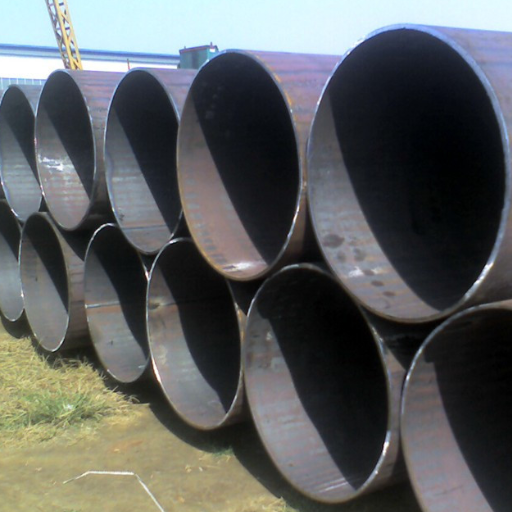
- Strength and Durability
ERW (Electric Resistance Welded) pipes are known for their high strength and long-lasting performance, making them ideal for applications requiring robust materials.
- Cost-Effective
Their manufacturing process is efficient, which results in lower production costs compared to other piping options, offering excellent value without compromising quality.
- Precision and Consistency
ERW pipes are manufactured with uniform dimensions and a smooth surface, ensuring precision and reliability in various applications.
- Versatility
These pipes are suitable for a wide range of uses, including water and gas transportation, scaffolding, fencing, and structural purposes.
- Corrosion Resistance
Many ERW pipes are coated with protective layers, enhancing their resistance to rust and extending their functional lifespan.
Cost-Effectiveness of ERW Pipe
ERW Pipes provide a cost-effective solution for various industries due to their manufacturing processes and consumption of materials. They are less expensive to produce than any other pipe type, given the lower energy inputs and simplified production methods involved. However, the cheap nature of these pipes has nothing to do with the quality; they are manufactured to meet stringent industry standards.
Lightweight structures mean transportation weighs heavily on their cost, which is very important for projects requiring such large quantities of materials. The global market data suggests that projects implementing ERW Pipes see a 20-30% reduction on total expenditure when compared to alternatives such as seamless pipes, mainly in areas like water and gas piping systems.
ERW pipes hold out well against ageing agents like corrosion and other types of deterioration, which reduces upkeep and replacement costs with time. With an expected life span from decades long, companies can therefore benefit from savings made upfront as well as in the long run. Projects meant to maximize cost savings thus find favour with ERW pipes due to cheap upfront expenses coupled with durability and low maintenance.
Strength and Durability of Electric Resistance Welded Steel
Like a signature of engineering precision, Electric Resistance Welded (ERW) steel ensures maximum strength and durability in many industrial applications. Able to stain from excessive tensile forces, ERW steel is applied when no compromise must exist on architectural integrity. To this end, modern state-of-art methods have further enhanced the qualities of ERW steels and made it capable of resisting deformation under extreme working conditions.
Uniform thickness of wall is one of the critical factors contributing to the longevity of ERW steel being made by automated welding techniques. Consistency means fewer weak areas that may hold during long-time service at higher pressures. Recent tests have shown that modern ERW pipes withstand pressures in excess of 3,000 psi, highly dependable when used in oil and gas pipelines, hydraulic systems, and construction.
ERW steel, on the other hand, quickly advances from resisting external environmental influences. These pipes have smooth finishes hence allowing the application of anti-corrosive coatings, thus resisting rust formation and chemical degradation. For instance, if a coated ERW pipe is deep buried in the ground, it will survive for more than 75 years under optimum conditions. These are life expectancies, combined with maintenance needs that are almost negligible, thus tagging the product as one of the cheapest and sustainable solutions. Continuous development on ERW steel technology will ensure that it will remain a key player in infrastructure development in the coming days.
Versatility in Applications
ERW pipes are probably the most adaptable kinds of pipes, thus making them suitable for all sorts of industries. This unlimited versatility means their use varies for any requirement, be it structural, mechanical, or fluid transport. Commonly used in construction, the pipes become part of building foundations or stand as scaffolding or underground piping arrangement due to strength and durability. The oil and gas industries find them suitable to convey hydrocarbons for more extended distances since the pipes are resistant to high pressure and corrosion.
The new set of data shows that the ERW pipes global market is expected to have a CAGR of more than 5% between 2023 and 2030, owing to increasing infrastructure projects and energy demand. The manufacturing process has been so perfected that improvements now allow for finer precision and uniform quality of material, ensuring the highest standards as far as safety and environment are concerned. Agriculture and water management industries also depend on ERW pipes for irrigation and wastewater solutions, thus cementing the pipes as one of the smallest cogs in the wheel of sustainability activities around the globe.
Current Trends and Insights in ERW Manufacturing
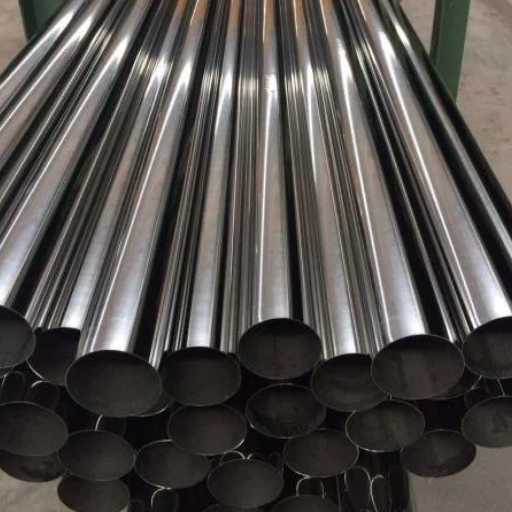
Automation and Smart Technologies
Increasingly, automation and smart technologies are being sought after in ERW manufacturing so as to enhance the efficiency and precision of operations. Automated systems will electronically streamline the production process, eliminate human errors and maintain the value of consistency in pipe quality. These smart technologies, such as sensors and advanced monitoring systems, make it possible to exercise control over quality in real time, thereby ensuring that performance standards are adhered to. Such kind of improvement could, in turn, expedite production and reduce costs, enabling ERW pipes to serve various industries.
Sustainability and Environmental Concerns
Sustainability in ERW manufacturing is still an area of concern. Companies are looking at energy-efficient machinery and processes aimed at silently minimizing emissions and waste. Recycling materials in the production process is a trend without compromising the quality, thereby promoting greener manufacturing across the world. This sustainable approach is consistent with the regulatory framework now promoting eco-conscious solutions and the consumers’ mindset caught up in this trend.
Degree of Global Expansion
The ERW pipe market is noticeably developing in new areas, spurred by large infrastructure projects and energy exploration in developing economies. To meet demand and various applications, manufacturers further extend into global realms, so they may better adapt to the developing industrial landscape. Globalization has also further promoted collaboration and exchange of ideas, bringing new speeds into the sector.
Developments in Electric Resistance Welding Technology
Improvements in Electric Resistance Welding technology have, from my perspective, imparted great efficiency and perfection in the making of pipes. In my view, improvements and new technologies like better welding processes, real-time monitoring systems, and laser-based technologies have helped the production processes. They cut down on wastage of materials, and improve the strength and standardization of welds, meeting growing demands of the various industries. The adoption of such technologies has greatly aided in the improvement of productivity and reliability in products from my observation and must be one of the driving forces behind modern manufacturing.
Market Demand and Future Projections for ERW Products
The demand for ERW goods is envisaged to be witnessed with great growth in the very near future owing to the construction, automotive, and energy sectors booming at an unforeseen rate. The world construction industry is forecast to sustain a steady growth, with urbanization and infrastructure developments feeding the demand for relatively durable and low-cost steel tubing solutions, such as the ERW technology.
On the other hand, developments in the automotive industry for lightweight and fuel-efficient designs have escalated the demand for ERW steel tubes, considering their strength-to-weight ratio and dimensional accuracy. Besides, any time you look at the energy industry, oil and gas keep holding the ERW pipes for pipeline infrastructure due to installation and cost advantages.
Based on some recent market insight, around 5-6% CAGR is expected to be observed in the global ERW pipes and tubes market from 2023 to 2030, wherein the Asia-Pacific region is acting as the stronghold of growth. The growth is credited to enhanced industrial development, infrastructure projects being undertaken at the hands of the Government, and investments in energy distribution networks. Further innovations in the manufacturing process, such as greener production methods and better coatings, are always viewed as catalysts for encouraging the use of ERW products, as the markets evolve.
Case Studies: Successful Applications of ERW in Various Industries
1. Automotive Sector: Enhancing Durability and Efficiency
The use of ERW pipes has entirely transformed the manufacture of vehicles in the automotive industry. ERW tubing is used extensively in the exhaust system, chassis, and suspension components to provide lightweight yet durable solutions. Leading automobile manufacturers have cited an improvement in fuel efficiency due to the reduced weight of ERW-based components while still being able to resist high loads. It is reported that due to the advances in electric vehicle development and the stringent emission regulations demanding high-performance and environmentally-friendly materials, the global automotive ERW pipe market value is supposed to cross $6 billion by 2030.
2. Energy and Power Generation
The energy sector makes copious use of ERW pipes in the transportation of oil, gas, and other energy sources. ERW pipes offer uniform wall thickness and have excellent strength, which makes them perfect for being used in both high-pressure and high-temperature environments. An example is their use in the renewable energy projects such as a geothermal power plant to support fluid transfer systems under extreme conditions. Market analysis reports suggest that ERW pipes in the energy industry are growing steadily at a CAGR of almost 5%, supported by growing investments in renewable energy infrastructure and the ongoing global switch to sustainable sources of energy.
3. Construction and Infrastructure Development
ERW steel pipes fulfill a crucial role in modern infrastructure projects, including bridges, high-rises, and transport networks. Applications encompass structural supports, scaffolding, and water distribution. Urbanization, for example, in areas of Southeast Asia, acts as a catalyst for demand for ERW pipes that support concrete frameworks that are not only affordable but reliable. Construction industry reports forecast a 7% annual growth in the use of ERW pipes, correlated to the pace of global infrastructure development and urban expansion initiatives.
4. Agricultural and Irrigation Systems
There has been a progressive use of ERW pipes by farmers and agricultural engineers for efficient irrigation systems and water management solutions. This allows resistance to corrosion, custom sizes, and cheap costs. Another 25% efficiency in water usage for drip irrigation systems implemented by ERW pipes constitutes huge savings and enhances crop production in water-scarce Indian states.
5. Industrial Applications
In industries such as chemical and food manufacturing, the demand for sourcing reliable and hygienic piping systems has led to widespread use of the ERW technology. Smooth internal surfaces of ERW pipes allow for safe transport of fluids, gases, and chemicals without the risk of contamination. Companies in Europe introduced innovative modular concepts incorporating ERW pipes and reported 15% fewer interruptions due to increased durability and ease of maintenance.
Due to its versatility and technological advancements, ERW pipes continue to exert an impact across various industries worldwide. Enhanced levels of research, quality upgrades, and environmentally friendly manufacturing methods will further open the scope of ERW pipes to back economic and industrial efforts.
Reference Sources
1. Role of Residual Stress in the Failure of HF-ERW Welded Tubes
- Authors: Nikhil Shajan et al.
- Published: April 1, 2024
- Journal: Engineering Failure Analysis
- Key Findings: This study investigates how residual stresses contribute to the failure of high-frequency electric resistance welded (HF-ERW) tubes. It emphasizes the importance of understanding residual stress patterns to improve the reliability and safety of welded structures.
- Methodology: The authors conducted experimental analyses and simulations to assess the impact of residual stresses on the mechanical performance of welded tubes(Shajan et al., 2024).
2. Effect of High-Frequency Electric Resistance Welding (HF-ERW) Parameters on Metallurgical Transformations and Tensile Properties of API X52 Microalloy Steel Welding Joint
- Authors: M. Sabzi et al.
- Published: July 20, 2023
- Journal: Archives of Metallurgy and Materials
- Key Findings: The study explores how different parameters of the HF-ERW process, such as frequency, compression force, and Vee angle, affect the mechanical properties and metallurgical transformations of API X52 microalloy steel welding joints. It concludes that specific parameter combinations yield optimal tensile properties.
- Methodology: The research involved varying welding parameters and conducting tensile and Charpy impact tests to evaluate the mechanical properties of the welded joints(Sabzi et al., 2023).
3. A Test Procedure to Evaluate ERW/HFW Pipe Seam Susceptibility to Embrittlement
- Authors: Saad M. Al-Muaili, M. Al-Anezi
- Published: March 19, 2023
- Journal: CONFERENCE 2023
- Key Findings: This paper presents a novel testing procedure for assessing the susceptibility of Electric Resistance Welded (ERW) and High-Frequency Welded (HFW) pipe seams to embrittlement in wet sour environments, which is crucial for ensuring the integrity of pipelines.
- Methodology: The authors developed and patented a testing procedure that complements existing standards, focusing on practical applications in the field(Al-Muaili & Al-Anezi, 2023).
Frequently Asked Questions (FAQs)
What is the ERW process in pipe manufacturing?
The Electric Resistance Welding (ERW) process is a method used in pipe manufacturing where edges of the steel are heated using an electric current, causing them to fuse together without the need for filler material. This method is efficient for producing high-quality steel pipes and tubing.
What are the benefits of ERW compared to seamless pipes?
ERW pipes offer several benefits over seamless pipes, including lower production costs, uniformity in size and shape, and the ability to produce longer lengths. Additionally, the ERW process allows for better control over the mechanical properties of the steel, making it suitable for various applications.
How does high frequency ERW differ from low frequency ERW?
High frequency ERW utilizes high frequency electrical currents to heat the edges of the steel, resulting in a faster welding process and potentially higher quality welds. In contrast, low frequency ERW uses lower frequencies, which may lead to a slower production rate and less precise welds.
What are the common applications of ERW round tubing?
ERW round tubing is commonly used in structural applications, automotive components, and mechanical tubing. Its versatility makes it suitable for various industries, including construction and manufacturing, where strength and durability are required.
Can you explain the difference between ERW and seam welded pipes?
While both ERW and seam welded pipes involve welding the edges of the steel, ERW pipes are produced through electric resistance welding, which is a continuous process. Seam welded pipes may use different welding methods and may not achieve the same level of uniformity and strength as ERW pipes.
What is the significance of pipe standards in ERW pipe manufacturing?
Pipe standards play a crucial role in ERW pipe manufacturing, ensuring that the pipes meet specific quality and safety requirements. These standards help in maintaining consistency in the mechanical properties of the pipes, including tensile strength and corrosion resistance, which are vital for their performance in various applications.
How does the alloy composition affect the properties of ERW steel pipes?
The alloy composition, including carbon and alloy steel, significantly affects the mechanical properties of ERW steel pipes. Higher alloy content can enhance strength, ductility, and resistance to corrosion, making the pipes more suitable for demanding environments.
What is selective seam corrosion in ERW pipes?
Selective seam corrosion refers to localized corrosion that can occur along the weld seam of ERW pipes. This can be influenced by factors such as the quality of the weld, the alloy composition, and the environmental conditions in which the pipe is used. Proper quality control during the manufacturing process can help mitigate this issue.



